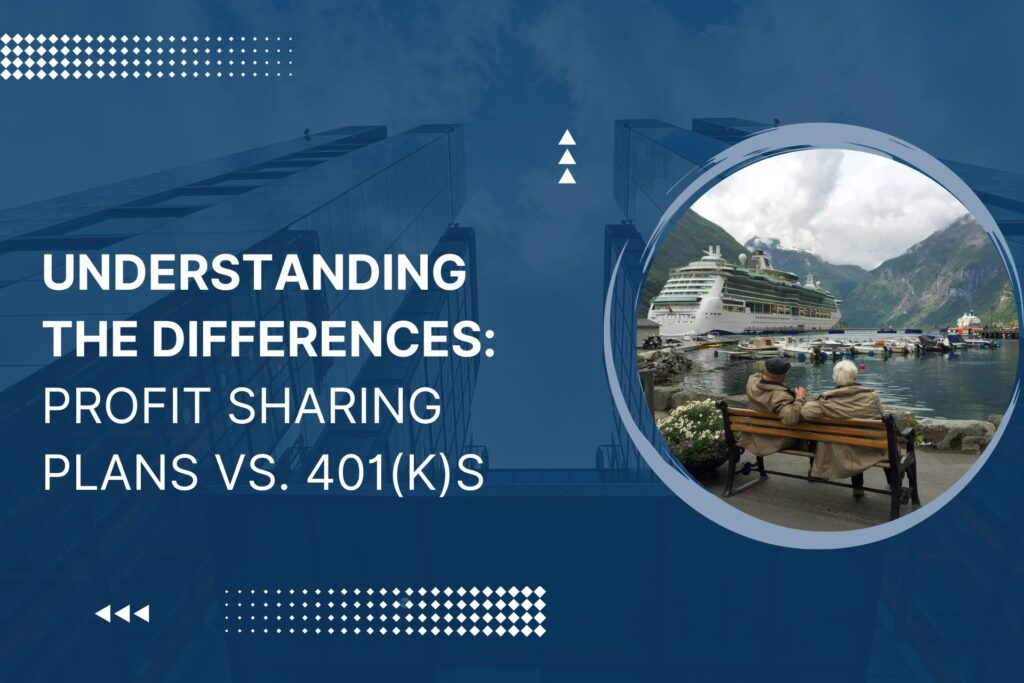In the realm of financial planning, profit sharing plans vs 401(k) are two prominent options that companies offer to their employees for retirement benefits. Each comes with its own set of features, advantages, and considerations, catering to different needs and goals. Understanding the nuances between profit sharing plans and 401(k)s is crucial for both employers and employees to make informed decisions about their financial futures.
Profit Sharing Plans: An Overview
Profit sharing plans are retirement plans wherein employers allocate a portion of the company’s profits to the eligible employees. Unlike 401(k) plans, which rely on employee contributions, profit sharing plans are funded entirely by the employer. The contributions are usually discretionary and can vary from year to year based on the company’s financial performance.
Features and Benefits
Employer Contributions:
The primary feature of profit sharing plans is that employers contribute to the plan on behalf of their employees. This serves as an additional incentive and can boost employee morale.
Tax Benefits:
Contributions made by employers to profit sharing plans are tax-deductible, providing tax benefits to the company.
Flexibility:
Profit sharing plans offer flexibility in terms of contribution amounts and eligibility criteria, allowing companies to tailor the plan according to their specific needs.
Vesting Schedule:
Employers may implement a vesting schedule, which determines when employees become entitled to employer contributions. This incentivizes employee retention and loyalty.
401(k) Plans: A Comprehensive Look
On the other hand, 401(k) plans are retirement savings accounts that allow employees to contribute a portion of their pre-tax income towards their retirement fund. Employers may also choose to match a certain percentage of employee contributions, providing an additional benefit.
Key Features and Advantages
Employee Contributions:
Unlike profit sharing plans, 401(k) plans involve contributions from both employees and employers. Employees can contribute a portion of their salary to the plan, up to the annual contribution limit set by the IRS.
Employer Matching:
Many employers offer matching contributions to 401(k) plans, which effectively doubles the employee’s contribution and accelerates retirement savings.
Tax-deferred Growth:
Contributions to 401(k) plans grow tax-deferred until withdrawal during retirement, allowing for potential compound growth over time.
Diverse Investment Options:
401(k) plans typically offer a variety of investment options, including stocks, bonds, mutual funds, and target-date funds, empowering employees to customize their investment portfolios based on their risk tolerance and financial goals.
Want to Know More about 401K Plans?
Click here to Schedule a Free Consultation Today!Key Differences and Considerations
While both profit sharing plans and 401(k) plans offer valuable retirement benefits, there are key differences that employers and employees should consider when choosing between the two options.
Ownership of Funds:
In profit sharing plans, the employer retains ownership of the funds contributed to the plan until distribution. In contrast, 401(k) plans grant employees full ownership and control over their contributions.
Contribution Structure:
Profit sharing plans rely solely on employer contributions, whereas 401(k) plans involve contributions from both employees and employers, often with matching contributions.
Tax Implications:
Contributions to both profit sharing plans and 401(k) plans offer tax benefits, but the specific tax treatment may vary based on individual circumstances and regulatory changes.
Employee Participation:
While profit sharing plans may encourage employee participation through discretionary contributions, 401(k) plans typically require active enrollment and contribution elections by employees.
Conclusion
In conclusion, both profit sharing plans and 401(k) plans play integral roles in retirement planning, offering unique features and benefits to employees and employers alike. The decision between profit sharing and 401(k) often depends on factors such as company objectives, employee demographics, and regulatory considerations. By understanding the differences and implications of each option, companies can design retirement benefits that align with their organizational goals and empower employees to achieve financial security in retirement.


